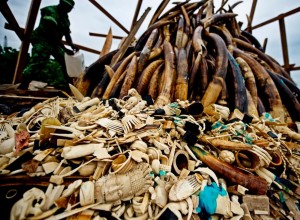Friday, June 21 marks the day the Philippines will destroy five tons of seized ivory, becoming the world’s first ivory-consuming nation to destroy its national ivory stock.
The decision comes in the wake of the south-east Asian nation being identified by National Geographic magazine as having a longtime ivory-trafficking problem.
“The destruction of the items would hopefully bring the Philippines’ message across the globe that the country is serious and will not tolerate illegal wildlife trade, and denounces the continuous killing of elephants for illicit ivory trade,” said Mundita Lim, director of the Protected Areas and Wildlife Bureau (PAWB) of the Department of Environment and Natural Resources.
PAWB, the country’s leading wildlife agency, will destroy all the ivory in its possession, except for 106 pieces to be repatriated to Kenya and a few pieces to be retained for training, enforcement, and education purposes. Five tons is less than half of the total ivory seized by the Philippines in recent years. But most of that seized ivory ‘grew legs’ and disappeared.
Customs agents seized 7.7 tons of smuggled ivory in 2005 and another 5.4 tons in 2009. But a subsequent audit revealed that customs had “lost” almost six tons of this ivory, an act so suspicious that PAWB sued the agency.
Customs turned its 2009 seizure over to PAWB, which soon discovered that it too had mice in its larder. Someone broke into its storeroom and stole more than 1.7 tons. The thieves even replaced the stolen tusks with excellent replicas made of plastic.
PAWB will destroy the remainder of its ivory this week on the grounds of the Ninoy Aquino Parks and Wildlife Center, Quezon City, by crushing using industrial rollers. Originally, the government had intended to have a small burn to accent the ceremony, but local environmental groups decried burning as sending up both the wrong message and too much smoke.
The ivory cache is worth roughly $6.5 million, based on prices charged by the Chinese government for raw ivory after its 2008 purchase. According to Philippine government officials, the ivory was smuggled from various countries, including Kenya, Tanzania, Zambia, and Uganda. Officials are taking samples for DNA analysis to be sent to Samuel Wasser, director of the Center for Conservation Biology at the University of Washington.









